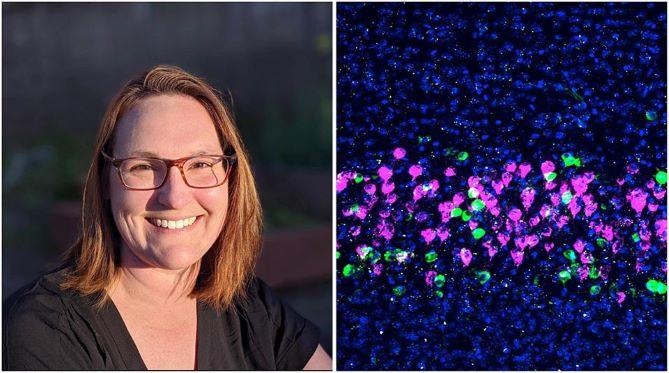Abstract
Animals use sensory stimuli to guide their actions. While the detection of ethologically relevant stimuli can elicit instinctive responses or reflexes, often stimuli become relevant through experience and learning. For example, many vertebrates can alter their responses to detected stimuli according to the outcome their actions produce. A major challenge to our understanding of the neuronal basis of this elemental form of goal-directed behaviour is that any visual stimulus evokes neuronal activity across multiple brain structures and, within each structure, across diverse types of neurons. Two evolutionary conserved brain structures for goal-directed behaviour are the striatum and the optic tectum (called superior colliculus in mammals). Both structures emerged over 500 million years ago, are present in all vertebrates and receive ascending visual input from the periphery. In mammals, however, these structures also receive descending visual input from visual cortex, via neurons that give rise to cortico-fugal pathways. Although these cortico-fugal neurons form the main neuronal pathways through which visual cortex can influence behaviour, causal evidence of their functional contribution to goal-directed behaviour is still lacking. In fact, mammals can learn and perform some detection tasks proficiently in the absence of sensory cortex. It thus remains unknown whether sensory cortico-fugal pathways provide any adaptive benefit in the emergence of such a simple goal-directed behaviour. Here, we combine intersectional viral approaches with optogenetic silencing and surgical lesions in mice to address the impact of visual cortex and two of its main cortico-fugal pathways in the learning and performance of a visual detection task. We show that visual cortex enhances learning speed through its striatal projecting neurons, whereas it enhances the sensitivity to detect visual stimuli via cortico-fugal neurons that target the superior colliculus. Our work reveals a functional dissociation between two distinct cortico-fugal neurons in visual cortex and suggests an adaptive contribution of sensory neocortex even in simple goal-directed behaviour.

Biography
Sarah Ruediger is a postdoctoral researcher in the laboratory of Dr. Massimo Scanziani at the University of California San Francisco and the Howard Hughes Medical Institute. She studied molecular biology at the University of Basel in Switzerland and completed her doctoral training in the laboratory of Dr. Pico Caroni at the Friedrich Miescher Institute for Biomedical Research. Her graduate research focused on the function of structural plasticity in the hippocampus in learning and memory. Sarah was awarded with the ‘Best Publication Award 2011’ by the Swiss Society for Neuroscience for her research on the role of structural plasticity in memory precision and she received the Ed Fisher Award for the best Ph.D. thesis by the Friedrich Miescher Institute. Sarah’s postdoctoral research focuses on the function of visual cortical circuit elements in the learning and performance of visually guided behaviour. She combines intersectional viral approaches with state-of-the-art methods to record and perturb neuronal activity to reveal the neuronal substrate that underlies the emergence of perception and behaviour. Her postdoctoral studies were supported by postdoctoral fellowships from European Molecular Biology Organization and the Swiss National Science Foundation. Sarah’s research was published in major scientific journals and her work was highlighted by renowned leaders in the field. Sarah’s long-term research goal is to contribute to our understanding of the circuit mechanisms that enable the brain to link perception with action and to unravel how the transformation of sensory input to motor output is dynamically regulated from one moment to another.
Click here to register via Eventbrite
